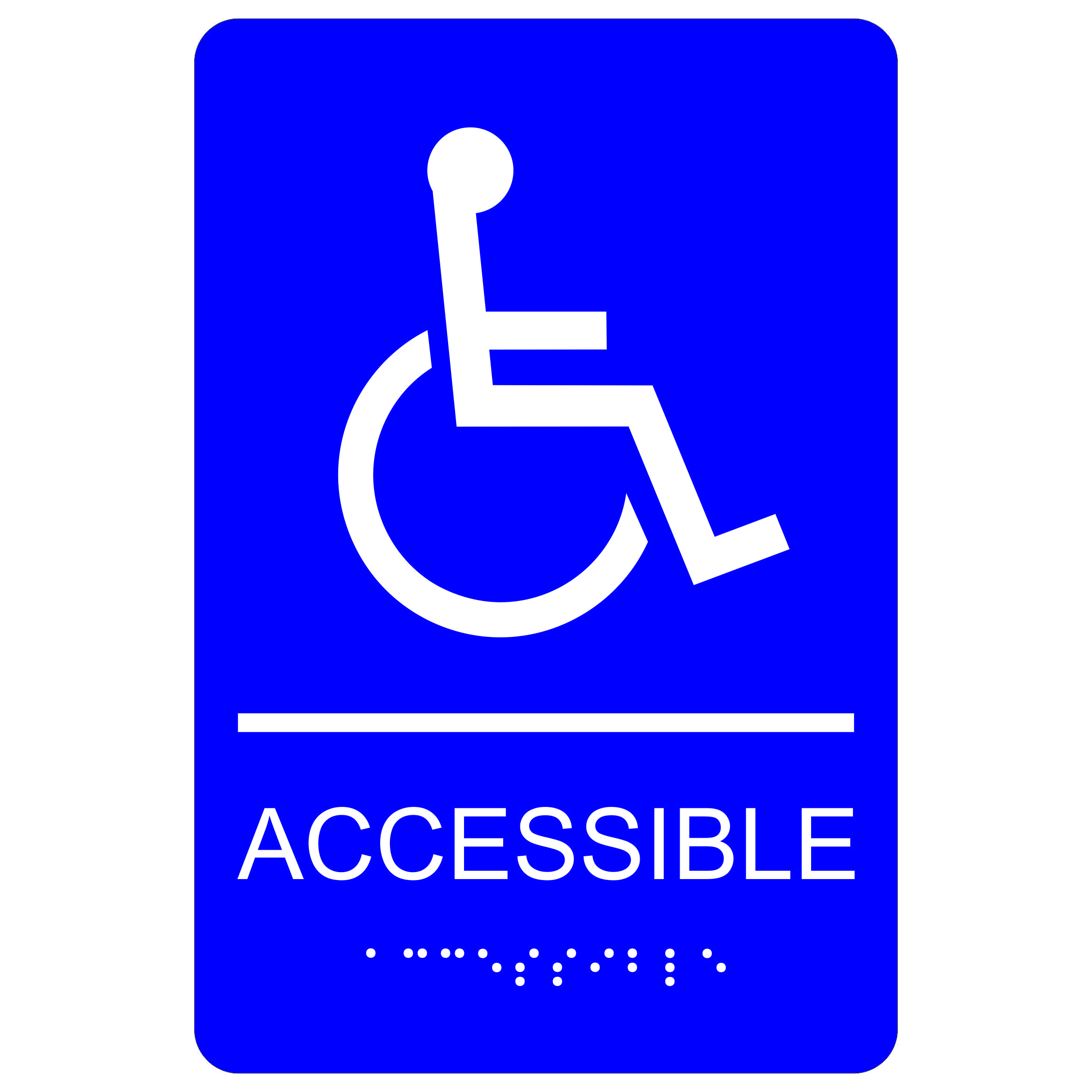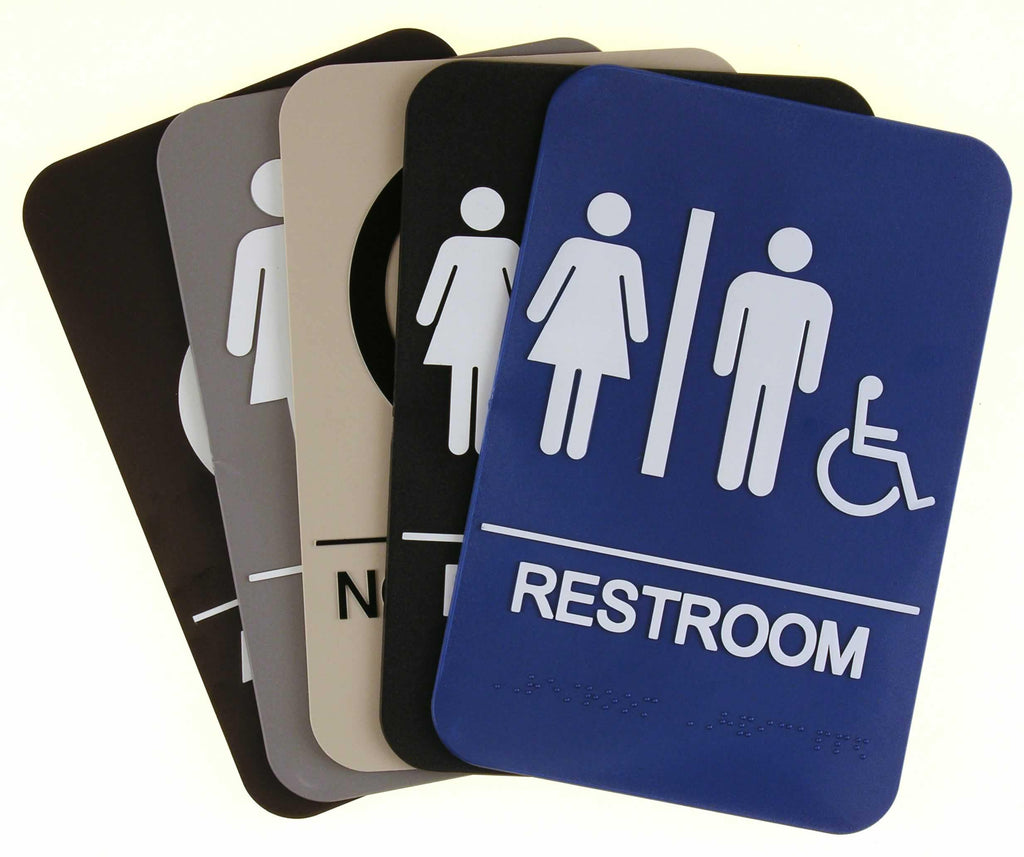The Role of ADA Signs in Adhering To Availability Specifications
The Role of ADA Signs in Adhering To Availability Specifications
Blog Article
ADA Signage: Ensuring Availability and Conformity in Public Spaces
ADA signage plays an important duty in guaranteeing accessibility and compliance within public rooms, considerably adding to an inclusive atmosphere for people with impairments. By sticking to ADA standards, signage not just helps with navigating yet also highlights a company's dedication to diversity and equal rights. As we discover the nuances of ADA signage, from responsive attributes to design ins and outs, it's crucial to think about exactly how these components coalesce to support the legal rights of all customers. What are the usual mistakes organizations deal with in keeping conformity, and how can future patterns in signage remain to drive access onward?
Importance of ADA Signage
In modern culture, the relevance of ADA signs expands beyond mere compliance with legal mandates to symbolize a commitment to inclusivity and accessibility for all individuals. These indications are essential in developing atmospheres where individuals with handicaps can navigate public rooms with the same simplicity and independence as those without handicaps. By offering clear and standard info, ADA signage makes certain that everybody can access facilities, solutions, and info without barriers.
The value of ADA signage depends on its capacity to improve the lifestyle for people with handicaps by advertising equal access. It removes the challenges that might or else hinder their capacity to take part fully in neighborhood life. Additionally, these indicators act as noticeable signs of a company's dedication to diversity and equality, reflecting broader societal worths that promote the rights and dignity of all people.
Additionally, ADA signs plays a critical function in public safety and security. By guiding individuals to leaves, washrooms, and various other essential facilities, it makes certain that all people, no matter physical capability, can leave safely during emergency situations. In recap, ADA signage is not just a regulative need but a powerful device for cultivating a equitable and comprehensive culture.
Crucial Element of Conformity

Placement is vital; indications must be set up in areas that are quickly noticeable and reachable. Typically, signage needs to be installed between 48 and 60 inches from the ground to make certain access for both standing and wheelchair customers. Tactile aspects, such as Braille, are necessary for individuals with aesthetic disabilities, supplying crucial information in a non-visual format.
High-contrast colors between the text and history are required to boost readability for individuals with reduced vision. The ADA mandates certain contrast proportions to ensure clarity. Furthermore, personality size is a key factor to consider, with minimum height requirements determined by the watching range to guarantee readability from numerous angles.
Layout Factors To Consider for Ease Of Access
Designing accessible signs calls for a careful approach to ensure it fulfills the requirements of all users, especially those with handicaps. The size of the text is similarly critical, with ADA guidelines suggesting a minimal elevation based on viewing distance to make sure readability.
Contrasting shades between text and background are vital for presence, specifically for individuals with visual impairments. A high contrast ratio assists differentiate the message from its history, boosting readability under numerous lights problems. Additionally, tactile elements, such as Braille and raised characters, are link important for individuals who are blind or have low vision. These elements should be located at a consistent height and position to ensure easy access and comprehension.
Additionally, the placement of signs plays a substantial function in availability. Indications should be installed in areas that are conveniently obtainable and unobstructed. Guaranteeing that signage is placed at ideal heights and angles enables all customers, consisting of those utilizing mobility devices, to connect with them successfully.
Typical Mistakes to Prevent

An additional widespread error is the inaccurate positioning of signs. ADA guidelines define specific height and location needs to make sure that signs are reachable and quickly visible by all people, including those using mobility devices. Neglecting these standards not only obstructs accessibility however likewise risks non-compliance with lawful criteria.
Furthermore, not enough contrast between message and background is a constant oversight. Sufficient comparison is essential for readability, especially for people with low vision. Designers often select shades official source that are aesthetically appealing however do not have the necessary contrast, making the message challenging to recognize.
Last but not least, some designers fail to integrate responsive components, such as Braille, which are essential for people who are blind. Omitting these attributes not only leads to non-compliance with ADA laws yet also restricts gain access to for a section of the populace that relies upon responsive details.
Future Trends in Signs
Advancements in modern technology and boosting understanding of inclusivity are shaping the future trends in signs style. Digital signage, for circumstances, is advancing to include real-time updates and interactive features, which can be critical in giving dynamic information in public rooms.
One more emerging pattern is the utilization of increased reality (AR) to boost user experience. AR-enabled signs can overlay digital details onto the physical environment, supplying visually damaged people with auditory or haptic comments. ADA Signs. This modern technology not only boosts ease of access yet also produces click here for more an engaging experience for all individuals
Sustainability is additionally a significant aspect influencing signage fads. Environment-friendly products and energy-efficient lighting options are being focused on to align with worldwide ecological objectives. Developments in materials scientific research are leading to the growth of even more weather-resistant and resilient indicators.
Verdict
ADA signs plays a vital role in ensuring availability and conformity within public rooms by including responsive elements, high-contrast colors, and tactical placement. The adherence to ADA standards not only helps with risk-free navigation for individuals with specials needs but additionally signifies an organization's commitment to diversity and inclusivity. By preventing usual errors and accepting future trends, public areas can continue to progress these worths, ensuring that the rights and dignity of all individuals are respected and upheld.
ADA signs plays an essential role in guaranteeing ease of access and compliance within public spaces, considerably contributing to an inclusive setting for people with specials needs. As we check out the nuances of ADA signage, from tactile attributes to make intricacies, it's vital to think about how these elements integrate to maintain the rights of all users.In modern-day society, the significance of ADA signs prolongs beyond plain compliance with legal requireds to symbolize a dedication to inclusivity and access for all individuals. By providing standardized and clear details, ADA signage ensures that every person can access facilities, solutions, and info without obstacles.
ADA signage plays a vital function in guaranteeing access and compliance within public rooms by integrating responsive aspects, high-contrast shades, and calculated positioning. (ADA Signs)
Report this page